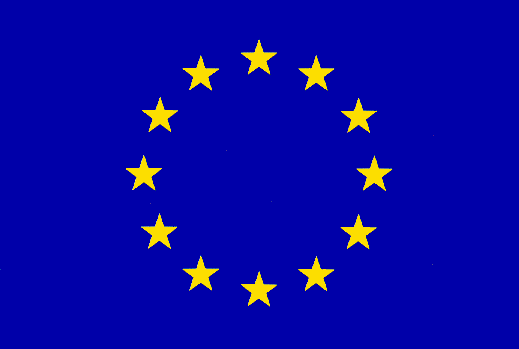

|
Technological solutions for fixed broadband, 3G mobile
networks, content distribution networks such as TV, and even converged
services are maturing in the European economic area and beyond. However, a
working technology is not enough, the extensive deployment of novel consumer
services and, thus, new usage habits, as well as new business infrastructure
and practices have turned out to be most challenging elements in achieving
widespread user acceptance and technology penetration. In Europe, these
issues are further compounded by near-saturation penetration levels in basic
services (2.5 G and fixed services), which change radically for the future
business models and regulatory frameworks for most incumbent stakeholders.
This state of the current situation needs to be overcome.
This deployment of new value-added or personalized
services requires a socio-economic and business process-related
initiative complementing the pure technology approach around basic services,
and is most urgently needed in the current European situation. Profitable
business opportunities will require the addition to value chains of new
types of stakeholders with own network configuration needs, so that the
provisioning of such services will become a reality, and also so that
products and services can be exported.
Determining the reality of such opportunities calls for
techno-economic analysis, reliable business plans, and
effective partnering models for potential players, integrated with
optimal technology platforms and rollout plans to support the widespread
service deployment. One illustrative example covers converged and mobile
banking services, where already network infrastructures offer lower
transaction costs than traditional inter-banking bank payment systems.
Another example covers information repositories created by communications
service users (e.g., enterprise data or private multimedia), where
transmission operators will have to interact with information storage
service suppliers. Likewise, using IT and 3G for remote eHealth and patient
monitoring represents yet another interesting model, where exact
cost-benefits and challenges, especially in developing economies and
transforming health systems of eastern Europe and CIS countries still have
to be analyzed. Also the advent of new technologies driving personal area
networking will drive the need for mutually beneficial use with other
networks.
Next generation network development will permit network
openness and end-user driven customization, besides content and services
development. These activities represent the major potential for new
specialized players, in particular in outsourcing (e.g., ASP, MVNO,
converged traffic and content billing, or network administration). This
potential must be encouraged through favorable economic and regulatory
conditions. We can also expect to see the emergence and growing role of
trusted third parties (e.g., authentication, payment, kiosque, and
portal services).
The modification of relations among players will make
interconnection, revenue redistribution, and cross billing concerns
increasingly sensitive. New economic and revenue distribution models will
have to be found. The closed "no door"/portal model is foreseeable, but
will it be sufficient? The applicability of open kiosque models will have to
be evaluated with respect to the difficulty of pricing new services.
Payments dependent on generated traffic would be the easiest model to
understand, but operators strenuously avoid this subject. On the other end
of the value chain, content owners, including end-users themselves in their
new role as content creators, will no longer want to depend on operators to
own the customer data bases, but will require end customer data and
profiling.
The market will, therefore, likely evolve toward
combined economic models. The impacts of these new partnerships on
information systems (security, billing, provisioning, process
automation, payments, repayments, trusted third parties, customer relations,
partnership management, interconnection, and liability risk management)
are a problem that is underestimated at the technical level (and dealt with
very little in standardization) and that is underestimated at the economic
and operational level as well.
Traditional players in the telecommunications and media
markets (fixed or mobile network operators, broadcasters) are currently
spending huge amounts of money in maintaining and improving their
infrastructure. A very recent example of huge spending relates to the
deployment of 3G mobile and broadband networks around Europe, with maybe
WiMAX to follow. Another example is the digitalization of TV networks and
introduction of DVB-T. Those investments have to be made, although it is
still very unclear what kind of new services - enabled by the new
infrastructure - consumers are really willing to pay for.
In parallel, a number of "disruptive" technologies
are already here or emerging (e.g., WiFi/WiMax, VoIP, or smart items)
challenging the feasibility of on-going investment decisions.
Finally, a new, highly competitive open market
environment is developing, which creates high expectations from
consumers that they might finally enjoy services at "commodity" prices. This
makes it even more difficult for traditional operators to introduce new
services at "premium" prices and telecom operators have to face the reality
of an ARPU continuously shrinking. A combined and optimal network and
economic efficiency needs to be reached. Enterprise needs cannot any longer
just be aligned with consumer needs. They require highly dependable and
configurable networks for their business processes to become both smart and
agile.
Another issue for Europe is that that the "vertical"
integration models, adopted in other areas of the world, seem to fail in
Europe (due to different consumer mentality and market structure and
dynamics). Therefore, it is increasingly accepted that no one single
actor will be able to provide a complete solution and the new rule of
success have to be sought in "co-opetition" (i.e. collaborations among
sometimes collaborating and sometimes competing services providers). The two
areas of networking and economics can bring insight about the way
communities are producing new goods with different property rights schemes
(e.g., open source, web 2.0).
The collaborative COST research on these issues is
essential to new-entrants and the wider Europe, since stakeholders there
will not want just to adopt with a delay old economic models, but will want
to leap-frog from a different legacy base. As known today, there do not
exist European projects today addressing such type of questions as a whole.
Thus, the Econ@Tel COST Action is not only complementing such projects, it
fills an interdisciplinary gap seen today.
|
|





